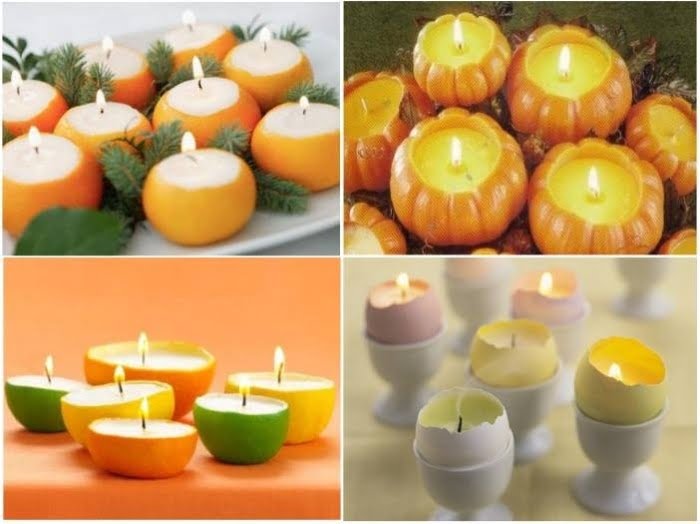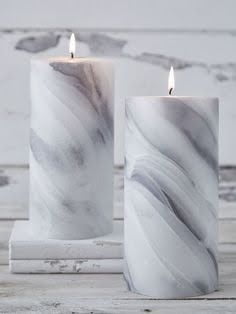Are you wondering, “Can you use oil warmer in candle making?” Oil warmers are a popular choice for adding fragrance to your home, but can they be used in the candle making process? In this article, we will explore the role of oil warmers and fragrance oils in candle making and answer the question of whether oil warmers can be used in this craft.
Candle making is a popular hobby and a creative way to add ambiance and fragrance to your living space. Using fragrance oils is an essential part of this process, as it allows you to create custom scents for your candles. Oil warmers, on the other hand, are often used to diffuse fragrance oils into the air. But can these two elements be combined for candle making? Let’s find out.
In the following sections, we’ll delve into the benefits of using oil warmers in candle making, safety precautions when using them, tips for choosing the right oil warmer, and a step-by-step guide on how to use an oil warmer for making candles. Whether you’re a seasoned candle maker or just getting started with this craft, incorporating an oil warmer into your process may enhance your experience and allow you to create beautifully scented candles.
The Role of Fragrance Oils in Candle Making
Fragrance oils play a crucial role in candle making, as they are the key component responsible for giving candles their aromatic appeal. These oils are specifically formulated to be used in candle making and come in a wide variety of scents, allowing crafters to create unique and personalized candles. When choosing fragrance oils for candle making, it is important to consider factors such as the scent’s strength, compatibility with the wax, and adherence to safety guidelines.
The use of fragrance oils not only adds a pleasant aroma to candles but also enhances their ambiance and mood-setting capabilities. Whether you prefer floral, fruity, or earthy scents, fragrance oils offer an extensive range of options for creating the perfect ambiance in any space. Additionally, experimenting with different fragrance combinations can result in custom blends that are not available in commercial candles.
When incorporating fragrance oils into candle making, it is essential to follow proper guidelines and measures to achieve optimal results. From selecting high-quality oils to determining the appropriate oil-to-wax ratio for the desired scent strength, attention to detail is vital. Furthermore, being mindful of safety precautions when handling fragrance oils ensures a safe and enjoyable candle-making experience.
Can You Use Oil Warmers in Candle Making?
Oil warmers are a popular household item used to diffuse fragrance oils throughout a room. These devices typically use heat to release the aroma of the oil into the air, creating a pleasant and inviting atmosphere. However, many people wonder if oil warmers can also be used in the process of making candles.
The answer is yes, you can use oil warmers in candle making as a way to incorporate fragrance into your homemade candles. By using an oil warmer, you can easily infuse your melted wax with the scent of your choice before pouring it into the candle molds. This method allows for a more customizable and aromatic candle-making experience.
When using an oil warmer in candle making, it is important to choose high-quality fragrance oils that are specifically designed for use in candles. These oils are formulated to disperse evenly throughout the wax and provide a long-lasting scent when the candle is burned. Additionally, it is essential to follow safety precautions when working with hot wax and oils to prevent accidents or injuries.
Here are some benefits of using oil warmers in candle making:
- Allows for better control over the strength of the fragrance in your candles
- Provides a wider variety of scents to choose from compared to pre-scented waxes
- Can be used to experiment with custom fragrance blends for unique and personalized candles
Benefits of Using Oil Warmers in Candle Making
Using oil warmers in candle making can provide several benefits, including enhancing the fragrance and overall quality of the candles. Here are some of the key advantages of using oil warmers in candle making:
- Enhanced Fragrance: Oil warmers help to release the fragrance from the oils more effectively, resulting in a stronger and longer-lasting scent for your candles.
- Customizable Scents: By using oil warmers, you have the flexibility to experiment with different fragrance combinations to create unique and personalized scents for your candles.
- Efficient Scent Distribution: Oil warmers can distribute the fragrance oils evenly throughout the wax, ensuring that the entire candle releases a pleasant aroma when lit.
In addition to these benefits, using oil warmers in candle making can also be a cost-effective way to incorporate fragrances into your candles. Instead of purchasing pre-scented wax or expensive essential oils, you can use affordable fragrance oils and a quality oil warmer to achieve the desired scent for your candles.
Moreover, by utilizing an oil warmer in your candle making process, you have greater control over the intensity of the fragrance. This allows you to adjust the amount of fragrance oil used based on your personal preferences and create candles with just the right amount of scent.
Safety Precautions When Using Oil Warmers for Candle Making
When it comes to using oil warmers for candle making, safety should always be a top priority. While oil warmers can add a lovely fragrance to your candles, it’s important to use them properly to avoid any potential hazards. Here are some essential safety precautions to keep in mind when using oil warmers for candle making.
First and foremost, it’s crucial to ensure that the oil warmer is placed on a stable and heat-resistant surface. This will help prevent any accidental tipping or spilling of hot oil, which could result in burns or fire hazards. Additionally, always place the oil warmer away from any flammable materials or surfaces to reduce the risk of fire.
Another important safety precaution when using oil warmers for candle making is to never leave them unattended while in use. It’s easy to get distracted, but it’s essential to keep an eye on the warmer and extinguish the flame promptly once the desired amount of fragrance has been released into the wax.
Furthermore, always follow the manufacturer’s instructions for your specific oil warmer model. This includes guidelines for proper usage, cleaning, and maintenance. Using the oil warmer as intended can help reduce the likelihood of accidents or malfunctions. By following these safety precautions, you can enjoy the benefits of using an oil warmer in candle making while minimizing potential risks.
Tips for Choosing the Right Oil Warmer for Candle Making
When it comes to choosing the right oil warmer for candle making, there are a few key factors to consider in order to ensure the best results. Here are some tips for selecting the perfect oil warmer for your candle making projects:
Material and Design
The first thing to consider when choosing an oil warmer for candle making is the material and design of the warmer. Look for a heat-resistant material such as ceramic or glass, as these materials can withstand the high temperatures required for melting fragrance oils. Additionally, consider the design of the oil warmer – a wider bowl or dish can provide better surface area for evaporation of the fragrance oils.
Heat Source
Another important factor to consider is the heat source of the oil warmer. There are different types of oil warmers available, including tea light-powered warmers, electric warmers, and bulb-powered warmers. Each type has its own advantages and limitations, so consider your specific needs and preferences when choosing a heat source for your oil warmer.
Adjustable Temperature Settings
If you want more control over the temperature at which your fragrance oils are heated, look for an oil warmer with adjustable temperature settings. This can be particularly useful if you’re working with different types of fragrance oils that may require different heating temperatures for optimal scent release.
Step-by-Step Guide to Using an Oil Warmer for Making Candles
Step 1: Set Up Your Workstation
Before you start using an oil warmer for making candles, it’s important to set up your workstation. Choose a well-ventilated area with a heat-resistant surface. Place the oil warmer on a stable and level surface away from flammable materials. Keep a fire extinguisher within reach as a safety precaution.
Step 2: Add Water and Fragrance Oil
Fill the top reservoir of the oil warmer with water, leaving some space at the top to prevent spillage. Then, add a few drops of your chosen fragrance oil to the water. It’s important to use fragrance oils specifically formulated for candle making to ensure optimal results.
Step 3: Heat the Oil Warmer
Light the tealight candle at the base of the oil warmer and place it underneath the top reservoir. The heat from the candle will warm up the water and release the fragrance into the air. Allow some time for the fragrance to disperse throughout the room before proceeding to make your candles.
Using an oil warmer in candle making can infuse your homemade candles with delightful scents that create a warm and inviting atmosphere in any space. By following this step-by-step guide, you can effectively use an oil warmer to enhance the aroma of your candles and create a more enjoyable sensory experience for yourself and others.
Alternative Methods for Fragrancing Candles Without Oil Warmers
In conclusion, the use of oil warmers in candle making can be a convenient and effective way to infuse your candles with delightful fragrances. While there are other methods for fragrancing candles without oil warmers, such as using essential oils or pre-scented wax, the use of an oil warmer provides a more customizable and consistent way to add scents to your candles.
The benefits of using oil warmers in candle making are numerous, including the ability to control the strength of the fragrance, as well as being able to experiment with different scent combinations. Additionally, the use of oil warmers can enhance the overall aesthetic of your candle making process by adding a decorative element to your workspace.
It is important to note that when using oil warmers for candle making, safety precautions must be taken into consideration. This includes ensuring proper ventilation in your workspace, keeping the oil warmer away from flammable materials, and following the manufacturer’s instructions for safe use. With careful attention to safety measures and thoughtful consideration of fragrance choices, utilizing an oil warmer in candle making can elevate the quality and appeal of your homemade candles.
Frequently Asked Questions
Can You Use an Oil Warmer for Wax?
Yes, you can use an oil warmer for wax. Oil warmers are actually quite versatile and can be used with various types of wax, including soy wax, paraffin wax, or beeswax. Simply place your desired wax into the dish on top of the warmer and let the heat gently melt the wax, releasing its fragrance.
Can You Use Wax Warmers for Candle Making?
Yes, you can use wax warmers for candle making. Wax warmers provide a convenient and effective way to melt candle wax evenly and safely without the need for a traditional double boiler setup.
Simply place your desired amount of candle wax into the dish of the wax warmer and let it melt, then add fragrance oils or dye if desired before pouring it into your candle mold.
How Do You Use an Oil Diffuser With a Candle?
To use an oil diffuser with a candle, simply place a few drops of your preferred essential oil onto the top of a cooled-down candle before lighting it. As the candle burns, it will gently heat the essential oil and release its aroma into the surrounding space along with the scent of the candle’s fragrance, creating a delightful sensory experience.
It’s important to ensure that any oils you use are safe for this purpose and won’t affect how the candle burns or its scent throw.

Welcome to my candle making blog! In this blog, I will be sharing my tips and tricks for making candles. I will also be sharing some of my favorite recipes.





